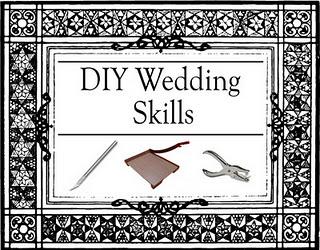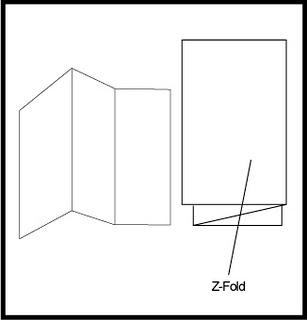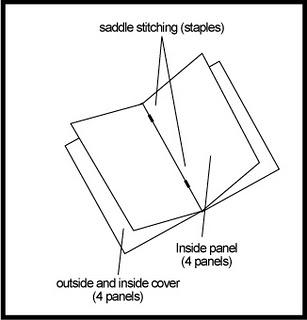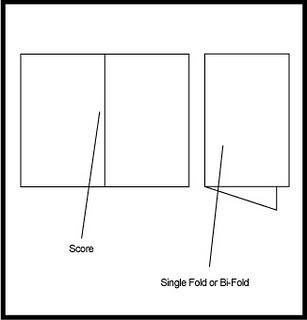
Happy Friday! Wanted to do a little primer for the D.I.Y. bride... Do you understand folds? Know why scoring your paper prior to folding it is important? If you keep some little things in mind as you put together your materials, your paper products will be neater and more consistent from element to element.Please refer to the paper primer post to become familiar with other paper terms you should know.
Any paper that has to be folded, should be scored first with a bone folder
and a straight edge. If you don't drag this tool along the paper and loosen the fibers, your
folded edge will look cracked, messy and unfinished.
DON'T skip this step. Also, folding cover stock over once (in half)
is referred to as a single fold or a bi-fold.
Paper that requires two folds, or folds that fold in on themselves
is referred to as a roll-fold, tri-fold or letter fold. Remember
the scoring principles...

Creating a program? Need holes for your ribbon to be pulled through?
Score your paper first, and use a ruler to measure where your holes
will be punched. They should be equidistant at the top and the bottom.
This way, when all of your finished programs are in a basket,
or stacked at the ceremony location, all of your bows, from program to program
are in the same spot. Measuring your holes makes for a very nice presentation.

Z-folding paper is a money saving option. Z-folding allows you to
only print on one side of your paper. You then score the paper twice
and fold it in a "z" shape. The first panel is the cover, and guests
pull it open and read it from left to right. Better and more interesting
than a two-sided element.

If you are not using ribbon and prefer to staple your spines,
you can perform your own "saddle-stitch" by purchasing an affordable
long reach stapler from Office Max. Make sure you still score the spines
and the 4-page spread edges (inside panel) are trimmed about 1/8"
shorter than the covers. This way, you won't have to worry about
the inside spread potruding from the cover once book is closed shut.



